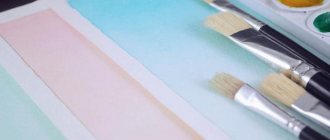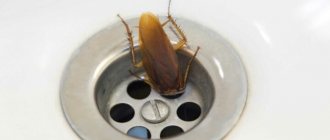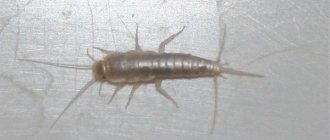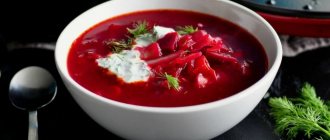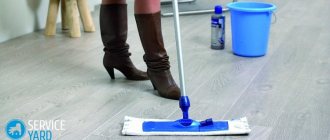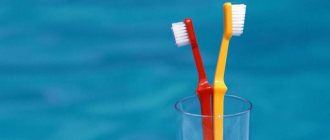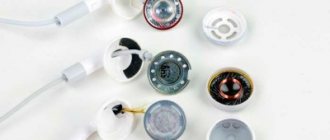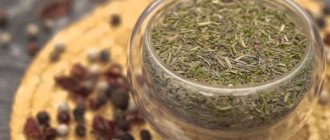Hello blog readers! It often happens that painting materials have not been used for a long time, and then you find a can of dry paint that is impossible to work with. What to do in this case? You need to know that some materials can be restored, and some, unfortunately, cannot. Today we will talk in detail about how to restore dried paints and how to prevent them from drying out. Let's figure it out.
Second wind
When a muse comes to an artist, he is completely immersed in the creative process. And it happens that after finishing the work there is no energy or time left to wash the brushes and palette, close the tubes and put the work place in order.
All creative people are familiar with this situation, and sometimes art materials suffer because of it.
Paints are most affected. But if you left the jar open or for some other reason they dried out, this is not a reason to despair.
Waterborne paints can last a long time as they can be restored to their original state. But oil, acrylic and tempera paints cannot be restored. Why? The fact is that the ability to restore paint depends on the binder included in the composition.
Let's look at each material separately to understand what you can do when it dries.
Composition of acrylic-based paints
The manufacturer offers acrylic paints for painting by numbers. They are included in the kit and are bottled in tubes or small jars. Each color has its own number.
Acrylic dye is a material that has the following properties:
- quick drying;
- no unpleasant odor;
- environmental friendliness and safety;
- increased resistance to external influences, light fastness, so the enamel does not fade over time;
- high combinatoriality, as a result of which when mixing basic colors you can get the desired shade;
- simplicity and ease of application with a brush.
The basis is acrylic - a polymer of acrylic resin. It increases the adhesion of the components, promotes the connection of the enamel layer with the surface and the formation of a film that increases strength.
Artistic acrylic paints also include:
- organic and inorganic pigments responsible for color and brightness;
- water or solvent;
- emulsifiers;
- filler;
- stabilizers;
- surfactants.
Enamels can be divided according to the type of solvent:
- Water-dispersed. Suitable for both painting and interior repair and finishing work. They are used for painting canvases and landscape paper, for walls and ceilings in living spaces. Non-toxic and safe.
- Made from substances of organic origin. Used for external processing, such as painting metal surfaces. They contain a large number of film formers. During the drying process, a smooth, glossy coating is obtained that protects the metal from corrosion, damage, and exposure to ultraviolet radiation.
Oil
In oil paints the binder is linseed oil. It is thanks to this component that paints harden to a stone state, after which they cannot be used.
This is why I recommend not squeezing a large amount of paint out of the tube.
Because then all the unused paint turns into solid masses that cannot be used in the future. And, by the way, they can only be cleaned with a hairdryer. But usually they just buy a new palette so as not to bother with dried material.
Cleaning dried oil is quite difficult.
If the paint has dried right in the tube, it cannot be used either. Although oil in tubes can be stored for many years, there is still a chance of hardening.
- For example, if the tube is not closed tightly.
- Or if there are cracks on the surface of the package, air also penetrates inside the package, causing the oil to harden.
How to restore dried oil paints?
Unfortunately, there can only be one piece of advice here: buy new tubes.
What solvent is needed for oil paints?
Oil paints can be used for different purposes and materials: wood (for example, for wooden floors), metal, canvases and others. They can be used for both interior and exterior work. Why is dilution required? There are different options, mainly for restoring the old solidified product and also to get a more liquid version that will look different in the paintings and make it easier to apply.
Today, two types of oil paint thinners can be distinguished: petroleum distillates or petroleum refining by-products. They are used to dilute compositions of dyes used for finishing construction work.
From these products various types of thinners are obtained, which can be used to dilute coloring agents. More information about common types will be discussed below.
Oil paints can be used for different purposes and materials: wood (for example, for wooden floors), metal, canvases and others.
Acrylic and tempera
I am often asked: how to restore dried acrylic paint for painting?
Acrylic and tempera are water-soluble paints. But, despite this, they also cannot be returned to their original state. The fact is that they contain an emulsion, which, when dried, turns the paint insoluble.
So, if the acrylic paint has dried out, you need to go to the store for a new one.
Turpentine and white spirit
Purified turpentine is a good option for large-scale paintings. Oil paints for painting become quite viscous and do not dry for a long time, and therefore you will always have the opportunity to make adjustments to the work. However, never use household turpentine, only from an art store. This substance can make the paint appear yellow. As for mineral white spirit, it dries much faster than the previous substance. In addition, it is less finicky in storage and safer in terms of chemical composition. And the price of such a thinner is lower. However, if the substance is of poor quality, a white coating may appear on the finished work after drying.
Watercolor
Finally some good news: watercolor can be restored. Watercolor is 80% pigment and the remaining 20% is binder and glue.
If you used watercolor in tubes and it dried out, then simply cut the packaging and use the paint as regular watercolor in pans. But its plastic properties will be slightly worse.
So, if you want to completely restore plasticity, you need gum arabic for this.
Gum arabic is a binder in watercolors that dissolves easily in water and provides plasticity.
Take an empty jar (you can use one that has run out of gouache), stir the watercolor with water and a small amount of gum arabic. This way you will get the original consistency.
Remember to close the lid tightly to avoid drying out again.
Watercolor is also sold in cuvettes, where it is always in its usual solid state.
This form is more convenient to use, as it does not require restoration.
Want to learn more about watercolor techniques and painting techniques? I advise you to read this article.
Features of diluting oil paints
Paints consist of pigment and drying oil mixed until smooth.
If you do not use the mixture for a long time, the coloring matter will settle, the middle layer will harden, and a lighter oil will float to the surface. Before use, the composition must be thoroughly mixed.
If you need to thin the paint after this, you need to take into account 2 factors:
- specifics of application (for painting or as a primer);
- the type of drying oil used to prepare the dye.
It is important to choose a substance for dilution that is similar to that contained in the coloring material. If the jar with the product has not been standing for long, it is better to dilute it with drying oil.
An incorrectly selected substance will lead to damage to the entire contents of the container, so you will have to carefully study the composition. In case of strong compaction or dilution of the primer, this method will not be effective enough. In such cases, the use of solvents is necessary.
It is necessary to determine how much substance will need to be added. There are no uniform standards due to differences in the composition of dyes and diluents.
The volume of the poured substance should not exceed 5% of the total amount of paint. If white spirit is used to create a primer, the figure increases to 10%. Do not immediately mix the composition in the jar.
It is better to carry out a trial procedure in a glass with a small amount of dye. This will prevent damage to the paint due to incorrect selection of proportions.
During work, the paint mixture may re-thicken due to evaporation of the thinner. The procedure will have to be repeated using a smaller amount of thinning agent.
If the paint has been left in the fresh air for a long time, a number of difficulties may arise. To make it usable, you will need to perform several actions:
- First, the film is removed from the surface. It cannot be mixed into the composition, as this will lead to the formation of lumps. There is no way to get rid of them.
- In a glass, a small amount of dye is mixed with white spirit. Then the resulting mixture is gradually added to the paint can until the desired thickness is achieved.
- If kerosene was used, you can start work immediately or wait until the substance has completely evaporated, and then re-dilute using white spirit.
It is recommended to breed outdoors. This will help avoid headaches, dizziness, watery eyes and nausea that may occur from inhaling paint fumes and thinners.
Gouache
Gouache dries out quite often. And often this comes as a surprise, because even if you use gouache every week, it can become cracked and lose its plasticity.
Why does this happen and how to restore dried gouache?
Remember: when working with gouache, you cannot use hot or even warm water! This dries it out significantly and contributes to the formation of mold in the jars.
If the gouache has dried and its surface is covered with cracks, you need to add a teaspoon of boiling water, close the lid tightly and leave the paint overnight.
The next day it will be like new. To restore plasticity, you can add a drop of PVA glue along with boiling water. But just boiling water will be enough.
Prevention
As mentioned above, gouache dries faster than other materials. To prevent drying out, follow these tips:
First of all, do not drain the liquid on the surface of the gouache!
If you drain this liquid, the gouache will crack on the surface of the sheet, and may even crumble.
Have you noticed that a new jar of gouache has a clear liquid on the surface? This is the glue that ensures the adhesion of gouache to the sheet.
Thoroughly mix this liquid with the gouache so that it is evenly distributed inside the jar. Repeat this as necessary if the glue separates again and ends up on the surface. This happens when gouache sits without use for a long time.
If you're just starting out in the world of art and don't know where to start, read about how to choose the right painting material.
Here are some basic tips on how to keep any material in its original form:
- Close the lid tightly. This will prevent air from penetrating inside the package and affecting the structure of the material.
- Use cold water when painting.
- Draw regularly. Constant practice will prevent the materials from drying out.
How to thin dried oil paint
To properly dilute the composition, you should study the manufacturer’s recommendations written on the packaging. They strictly monitor compliance with proportions so as not to compromise the quality of the product and not lose all the positive properties and color effect.
When working at home, ventilation is required; all formulations contain chemical components that can be harmful to health if inhaled.
Also make sure that the product does not get on the skin; if this happens, immediately wash the area with cold water. It's better to wear gloves.
Having introduced the required amount of the dissolving element, intensive stirring is performed until a homogeneous consistency is obtained. Solvents can also be used to obtain a primer mixture.
Having introduced the required amount of the dissolving element, intensive stirring is performed until a homogeneous consistency is obtained.


